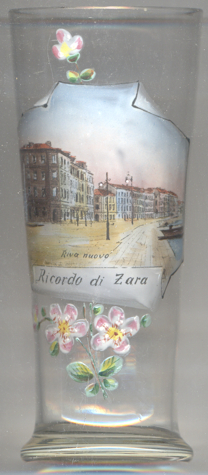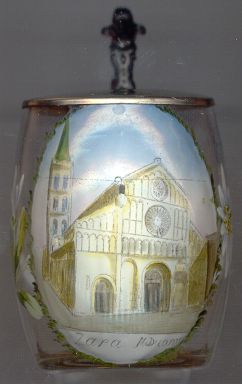

|
| HRVATSKA | CROATIA |
| županija: Zadarska |
 Zadar is one of the oldest historical and cultural centres on the Dalmatian coast. The first oldest traces
of settlements date from about the 9th century, BC, the first written evidences were left
in the 4th century BC by the Liburnian tribe. After the Roman conquest the place developed into a town.
Jadera, later called Diadora, became the capital of Dalmatia in the early 7th century.
Until 998 the town remained with the eastern Roman empire. Thereafter, the town was ruled by Venetian and Hungarian rulers.
In 1409 Venice finally purchased Zadar (Zara in Italian) for a sum of 100,000 ducats. In 1806 the town came in possession
of Austria. Except during the French period (1809–1813) Austria ruled until the end of World War I in 1918.
In 1920 Zara became part of Italy. During World War II the town suffered heavy bombings. In 1945, Zadar became part of
Yugoslavia. Between 1991 and 1995 the town suffered again during the combats between the Croatian and Serb forces.
Today, Zadar is the capital city of the Zadarska županija (Zadar county) and has a population of about 44,000.
Zadar is one of the oldest historical and cultural centres on the Dalmatian coast. The first oldest traces
of settlements date from about the 9th century, BC, the first written evidences were left
in the 4th century BC by the Liburnian tribe. After the Roman conquest the place developed into a town.
Jadera, later called Diadora, became the capital of Dalmatia in the early 7th century.
Until 998 the town remained with the eastern Roman empire. Thereafter, the town was ruled by Venetian and Hungarian rulers.
In 1409 Venice finally purchased Zadar (Zara in Italian) for a sum of 100,000 ducats. In 1806 the town came in possession
of Austria. Except during the French period (1809–1813) Austria ruled until the end of World War I in 1918.
In 1920 Zara became part of Italy. During World War II the town suffered heavy bombings. In 1945, Zadar became part of
Yugoslavia. Between 1991 and 1995 the town suffered again during the combats between the Croatian and Serb forces.
Today, Zadar is the capital city of the Zadarska županija (Zadar county) and has a population of about 44,000.
Glass no. 3283 [left] show a view of
 Riva nuova
Riva nuova
[Note that the Italian labeling of the picture contains a spelling error: Riva nuovo instead of
Riva nuova.]
(see also list of other basilicae minores depicted on glasses of this collection)
[...;
https://en.wikipedia.org/wiki/Peter_Krešimir_IV_of_Croatia]
 The
The  cathedral of St. Anastasia (Katedrala sv. Stošije) goes back to the 5th and 9th century.
The present, Romanesque, church mainly dates from the beginning of the 13th century. Several floor mosaics
date from the 5th century. The church received the status of a Basilica minor in 1867.
cathedral of St. Anastasia (Katedrala sv. Stošije) goes back to the 5th and 9th century.
The present, Romanesque, church mainly dates from the beginning of the 13th century. Several floor mosaics
date from the 5th century. The church received the status of a Basilica minor in 1867.
![[scale]](lineal.jpg)